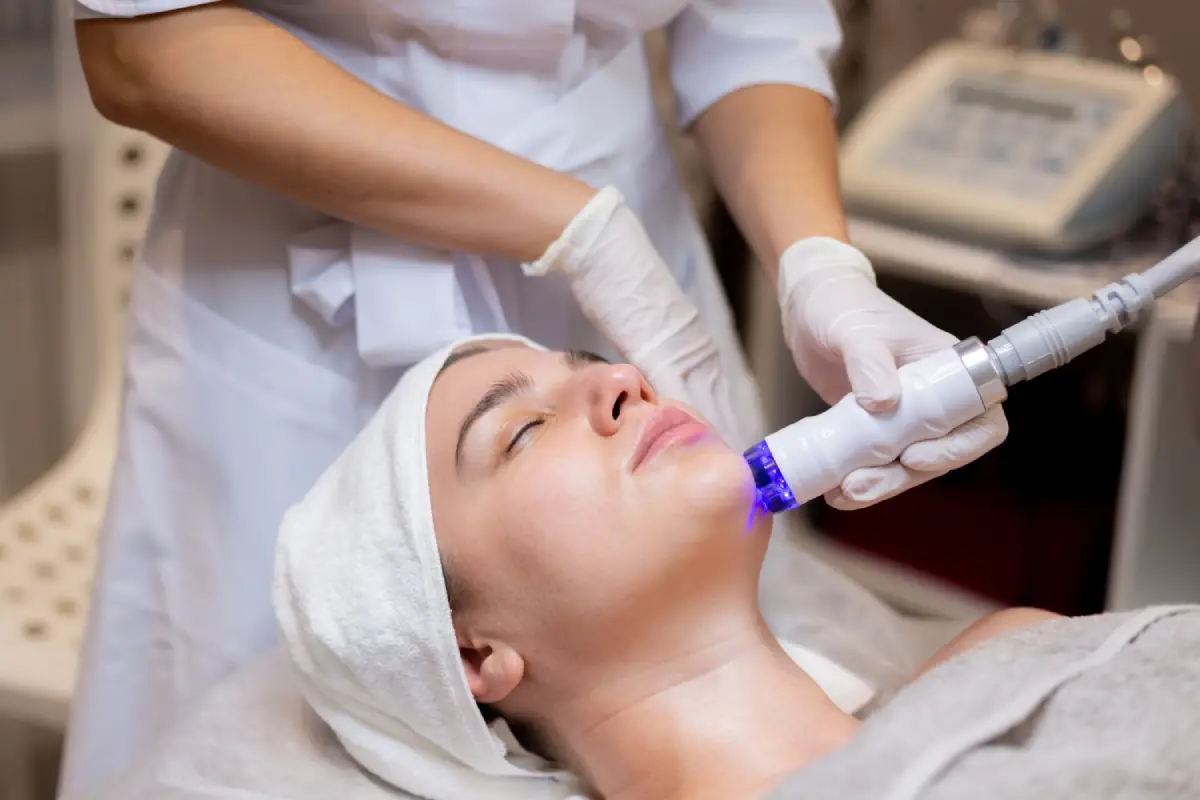In today’s image-conscious culture, people are increasingly seeking ways to look as energized and confident as they feel. Clear, healthy skin often serves as a visual marker of wellness, influencing personal confidence and professional presence. Interest in skin rejuvenation is at an all-time high as individuals look to maintain a vibrant and youthful appearance in a world where first impressions matter more than ever.
This growing trend isn’t just about vanity; it reflects a shift in how society values self-care and overall well-being. Many are motivated by concerns like uneven skin texture, sun damage, fine lines, age spots, and even early-onset wrinkles. Others want to address lingering acne scars that remind them of difficult adolescent years, or wish to refresh their appearance after periods of stress or illness. The options for achieving these goals have expanded rapidly: from advanced laser therapies to revitalizing facials, consumers now have greater access to innovative procedures.
Additionally, many people are prioritizing minimally invasive options over more drastic measures. Improved accessibility and better education about treatment possibilities mean individuals can enhance their complexion without interrupting their busy lives. Whether motivated by a milestone event, work obligations, or the desire to feel good every day, this new era of skin care shows that looking after one’s skin is not limited to celebrities or the wealthy—everyone can participate in the journey toward healthier, more confident skin.
Contents
- 1 The Science Behind Skin Rejuvenation
- 2 Short-Term Glow, Long-Term Health
- 3 The Mind-Skin Connection: Confidence After Treatments
- 4 Types of Skin Rejuvenation Treatments
- 5 What to Expect During and After Treatment
- 6 Making Responsible Choices: Safety and Self-Care
- 7 Staying Informed with Current Trends and Research
The Science Behind Skin Rejuvenation
Skin rejuvenation is rooted in understanding the body’s complex repair and renewal mechanisms. Many well-established treatments encourage collagen and elastin production, two proteins critical to maintaining firm, smooth, and plump skin as we age. For example, therapies like microneedling use fine needles to create precise micro-injuries, which trigger a natural healing response.
This, in turn, boosts the skin’s ability to repair itself while bringing more nutrients and oxygen to the surface. Chemical peels, another popular option, carefully exfoliate dead skin cells and stimulate new cell growth, resulting in a brighter, more even complexion.
Scientific research underscores the efficacy of these methods when administered safely and correctly. The American Academy of Dermatology notes that treatments tailored by experienced professionals can address concerns ranging from mild discoloration to more advanced photoaging. Treatments are not a one-size-fits-all affair; the choice of technology, depth, and frequency must be calibrated to suit each unique skin type and desired result. This customization ensures that interventions remain effective and safe, paving the way for healthy, rejuvenated skin.
Short-Term Glow, Long-Term Health
Many people are initially drawn to skin rejuvenation for the immediate improvement in radiance and smoothness they experience in the days following a procedure. This short-term “glow” stems from increased blood flow and dead cell removal, allowing light to reflect more evenly off the skin’s surface.
However, the real beauty of modern therapies lies in their potential to deliver lasting benefits that accumulate with time. Treatments that stimulate collagen remodeling, like specific laser therapies and microneedling, not only encourage visible improvements in texture, hydration, and firmness but also help reinforce the skin’s natural barrier. Over months, recipients often notice fewer signs of aging and a more resilient complexion.
According to expert resources, pairing professional treatments with a dedicated at-home routine—including sunscreen, moisturizer, and gentle cleansers—amplifies long-term results and reduces the risk of new issues arising. Simple daily practices, such as avoiding excess sun and drinking enough water, not only protect against environmental damage but also actively support and extend the results of in-clinic interventions. This holistic approach empowers individuals to invest in their skin’s future health while enjoying the satisfaction of visible transformations today.
The Mind-Skin Connection: Confidence After Treatments
The state of one’s skin can deeply influence self-confidence and overall mental well-being. Scientific studies and anecdotal accounts alike show that improvements in appearance—particularly when they lead to clearer, smoother, or more even-toned skin—have a measurable impact on self-esteem. It’s not uncommon for people to report feeling less self-conscious when socializing, going to work, or even looking in the mirror after completing a course of rejuvenation treatments. For some, this increase in self-assurance provides a significant mental-health benefit that goes far beyond the aesthetic.
Publications such as Psychology Today have explored how physical changes, including clearer or more youthful-looking skin, positively affect social confidence and happiness. The improvements can inspire people to be more outgoing, try new activities, or meet challenges they might have once avoided. For many, investing in the skin is less about chasing unrealistic ideals and more about reclaiming a sense of control and joy in daily life.
Types of Skin Rejuvenation Treatments
- Microneedling: Involves a device equipped with miniature needles that create controlled, superficial punctures in the skin. These micro-channels activate the natural healing response, promoting new collagen and elastin fibers. Results include a smoother texture, reduced pore size, and improved firmness.
- Chemical Peels: Special acid solutions are used to gently exfoliate the outermost skin layers. This approach can help with pigmentation, fine lines, acne scars, and dullness by revealing fresher, more radiant skin below while boosting cellular turnover for longer-term effects.
- Laser Resurfacing: Employs precise light energy to target water or pigment in the skin, addressing deeper wrinkles, sunspots, scars, and laxity. Fractional lasers, for example, create tiny zones of injury that expedite healing and collagen production with minimal recovery.
- Light-Based Therapies: Such as IPL (intense pulsed light), treat redness, spider veins, or uneven tone by delivering bursts of light to target specific pigmentation without damaging surrounding tissue. These treatments offer visible improvements with little to no downtime for most patients.
Choosing the best treatment depends on individual skin concerns, desired only outpatient downtime, and overall health. Working with a board-certified provider ensures an evidence-based, personalized approach.
What to Expect During and After Treatment
The journey to revitalized skin often starts with a consultation to assess goals, skin type, and personal preferences. Most non-surgical procedures are performed in an outpatient setting, and topical numbing is used for comfort. Treatment sessions can be as quick as 30 minutes, with many people able to return to work or routine activities soon after. Immediate side effects usually include temporary redness, mild swelling, or light flaking, which fade within a few days as the skin renews.
Aftercare is pivotal in ensuring the best results and minimizing unwanted reactions. Providers often advise diligent sun protection, avoiding harsh exfoliants, and using soothing moisturizers to aid healing. Following these guidelines not only speeds up recovery but also safeguards the fresh new skin from future harm. Adhering to recommended aftercare measures can transform a good outcome into a truly great one, supporting confidence and satisfaction.
Making Responsible Choices: Safety and Self-Care
Safety and evidence-based care should remain top priorities amid the growing demand for aesthetic procedures. Always seek professionals who are appropriately certified and experienced in the therapies they provide. Ask to see credentials, reviews, and photographs of previous client outcomes. Transparency during consultation is as crucial as hygiene in the treatment environment.
Responsible self-care extends beyond the treatment room. Daily habits—from sunscreen and staying hydrated to antioxidant-rich foods—reinforce the benefits of professional skin care. These small but strategic choices can maximize the life of rejuvenation results and reduce the risk of complications, paving the way for lifelong skin health.
Staying Informed with Current Trends and Research
The skin care industry constantly innovates, introducing new technologies, approaches, and products. Keeping up with reputable news and research helps consumers make confident, informed decisions amidst the noise of unproven trends. Evaluating the efficacy, safety profile, and credentials behind any treatment minimizes risk and maximizes reward.
Ultimately, pursuing skin rejuvenation is a personal journey that blends science, self-care, and confidence. With thoughtful planning and expert guidance, anyone can enjoy the benefits today and for years.





